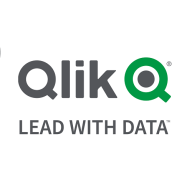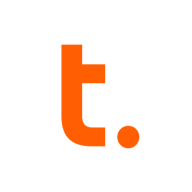

Teradata and Qlik Compose compete in the data management and analytics space. Teradata appears to have the upper hand with its strength in handling large-scale data processing and high performance, while Qlik Compose stands out for its ease of use and data integration capabilities.
Features: Teradata provides robust parallel processing, high scalability, and performant data warehousing, making it suitable for large-scale queries and operational reporting. Qlik Compose offers exceptional ETL features, ease of data integration, and an intuitive interface, allowing rapid transitions from data modeling to a functional warehouse environment.
Room for Improvement: Teradata can improve by addressing its high costs, enhancing cloud integration, and improving compatibility with modern big data tools. Additionally, it needs better scalability and user-friendly interfaces. Qlik Compose requires enhancements in ETL and monitoring features, better handling of large data volumes, and improved user interfaces. Both products could benefit from better integration capabilities and additional training resources.
Ease of Deployment and Customer Service: Teradata supports diverse deployments across on-premises, public, and hybrid clouds, but its initial setups are complex. While technical support is appreciated, response times could be faster. Qlik Compose offers straightforward on-premises and cloud deployment, with customer service reputed for effective support and timely resolution of issues.
Pricing and ROI: Teradata, known for its high upfront costs, provides valuable performance and scalability, justifying the investment for large enterprises. More flexible pricing options could attract a broader user base. Qlik Compose is moderately expensive with potential for more competitive pricing, though both products are considered to deliver satisfactory ROI due to enhanced data processing and analytics.


Qlik Sense is a powerful business intelligence tool that offers a range of features to help organizations make faster and more informed decisions. Its primary use cases include operational and financial dashboards, self-service reporting, and centralized access to cross-functional reports. The solution is praised for its mobile platform, ease of use, data-sharing capabilities, and extensibility.
Qlik Sense has helped organizations improve data literacy, reduce time consumed in complex reports, and provide widely available MI to senior stakeholders. It also enables self-service analytics, improves data quality and governance, enhances collaboration, and reduces costs.
Teradata is a scalable data analytics platform designed to meet enterprise demands for large-scale data management and processing, focusing on performance, scalability, and security for complex query executions.
As a leading data warehousing solution, Teradata integrates advanced analytics enabling organizations to derive insights from massive datasets. It supports high-volume data workloads with its architecture optimized for analytical queries. Users benefit from its robust scalability, allowing seamless expansion as data grows. Teradata's SQL engine is compatible with a wide range of data types, ensuring flexibility in data analysis. With advanced security measures, it protects sensitive data across various environments, providing peace of mind to users handling critical information.
What are the most important features of Teradata?Teradata is widely used in industries like finance, telecommunications, and healthcare, where data-driven decisions are critical. Companies leverage its robust analytics capabilities to enhance customer experiences, streamline operations, and ensure compliance with regulatory requirements. In these sectors, quick access to data insights can significantly impact competitive advantage.
We monitor all Data Integration reviews to prevent fraudulent reviews and keep review quality high. We do not post reviews by company employees or direct competitors. We validate each review for authenticity via cross-reference with LinkedIn, and personal follow-up with the reviewer when necessary.